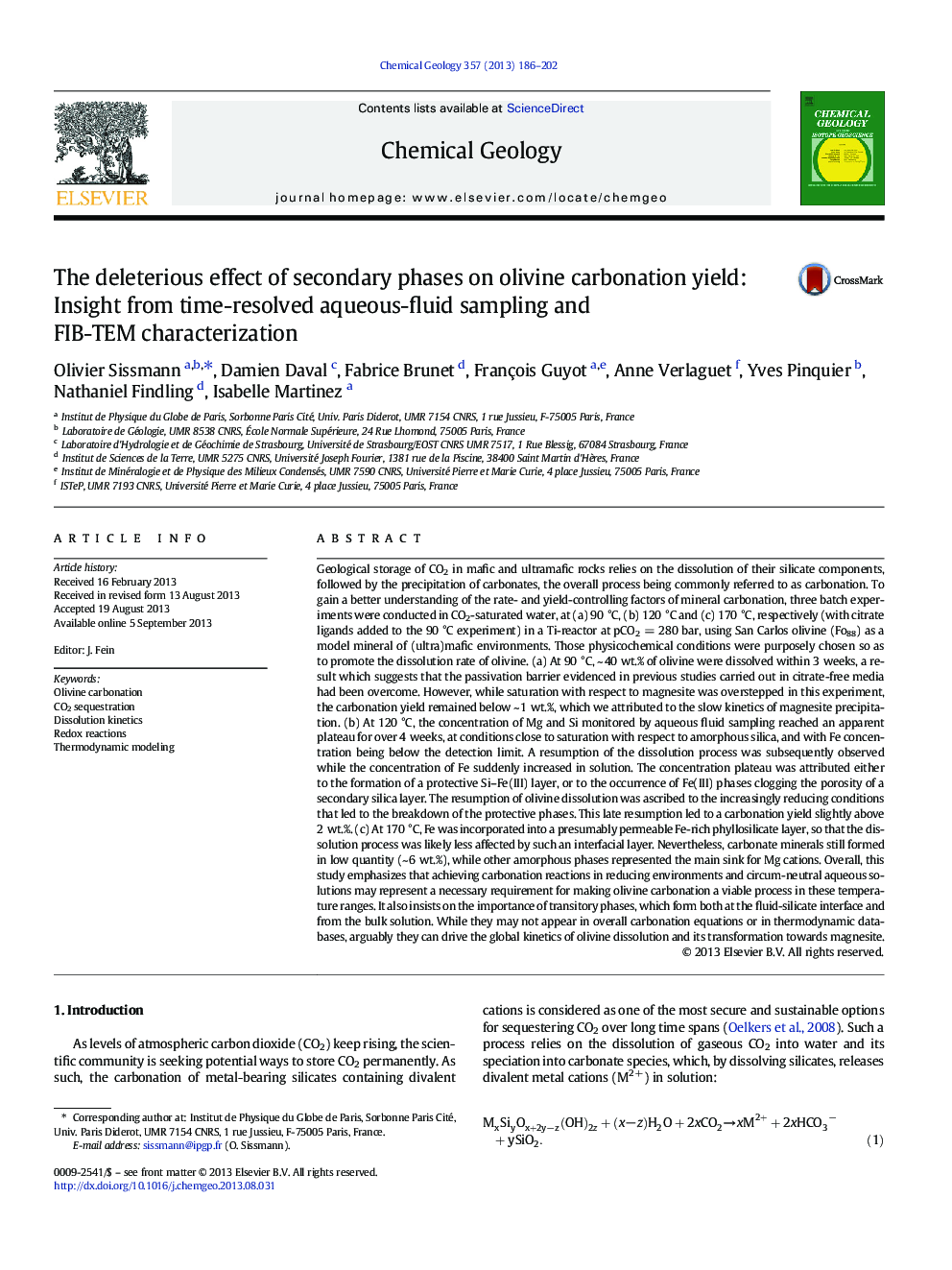| کد مقاله | کد نشریه | سال انتشار | مقاله انگلیسی | نسخه تمام متن |
|---|---|---|---|---|
| 6436883 | 1637612 | 2013 | 17 صفحه PDF | دانلود رایگان |

- Iron valency plays a key role on the passivation capacity of secondary phases.
- Olivine carbonation may need to be carried out in reducing environments.
- Mineralogy & passivation properties of interfacial layers evolve with temperature.
- Transitory phases drive the global kinetics of olivine carbonation.
Geological storage of CO2 in mafic and ultramafic rocks relies on the dissolution of their silicate components, followed by the precipitation of carbonates, the overall process being commonly referred to as carbonation. To gain a better understanding of the rate- and yield-controlling factors of mineral carbonation, three batch experiments were conducted in CO2-saturated water, at (a) 90 °C, (b) 120 °C and (c) 170 °C, respectively (with citrate ligands added to the 90 °C experiment) in a Ti-reactor at pCO2 = 280 bar, using San Carlos olivine (Fo88) as a model mineral of (ultra)mafic environments. Those physicochemical conditions were purposely chosen so as to promote the dissolution rate of olivine. (a) At 90 °C, ~ 40 wt.% of olivine were dissolved within 3 weeks, a result which suggests that the passivation barrier evidenced in previous studies carried out in citrate-free media had been overcome. However, while saturation with respect to magnesite was overstepped in this experiment, the carbonation yield remained below ~ 1 wt.%, which we attributed to the slow kinetics of magnesite precipitation. (b) At 120 °C, the concentration of Mg and Si monitored by aqueous fluid sampling reached an apparent plateau for over 4 weeks, at conditions close to saturation with respect to amorphous silica, and with Fe concentration being below the detection limit. A resumption of the dissolution process was subsequently observed while the concentration of Fe suddenly increased in solution. The concentration plateau was attributed either to the formation of a protective Si-Fe(III) layer, or to the occurrence of Fe(III) phases clogging the porosity of a secondary silica layer. The resumption of olivine dissolution was ascribed to the increasingly reducing conditions that led to the breakdown of the protective phases. This late resumption led to a carbonation yield slightly above 2 wt.%. (c) At 170 °C, Fe was incorporated into a presumably permeable Fe-rich phyllosilicate layer, so that the dissolution process was likely less affected by such an interfacial layer. Nevertheless, carbonate minerals still formed in low quantity (~ 6 wt.%), while other amorphous phases represented the main sink for Mg cations. Overall, this study emphasizes that achieving carbonation reactions in reducing environments and circum-neutral aqueous solutions may represent a necessary requirement for making olivine carbonation a viable process in these temperature ranges. It also insists on the importance of transitory phases, which form both at the fluid-silicate interface and from the bulk solution. While they may not appear in overall carbonation equations or in thermodynamic databases, arguably they can drive the global kinetics of olivine dissolution and its transformation towards magnesite.
Journal: Chemical Geology - Volume 357, 24 October 2013, Pages 186-202